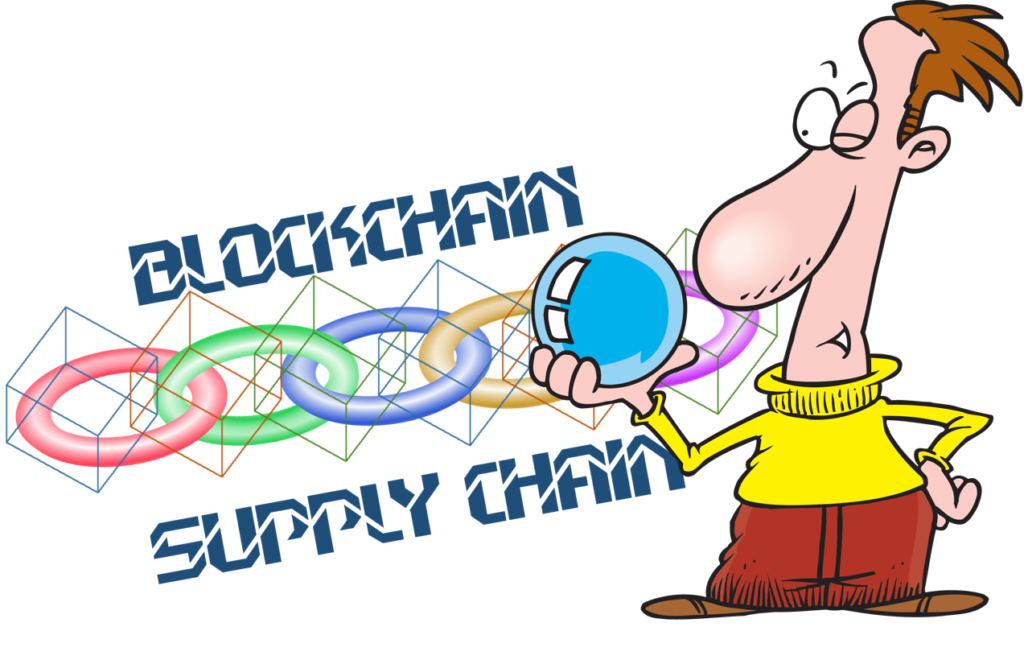Even before blockchain (aka distributed ledger) technology has moved beyond its infancy, some analysts are warning it could create unintended consequences. Such concerns are neither surprising nor unwarranted. The mythical law of unintended consequences holds that actions always have effects that are unanticipated or unintended. The blockchain concept is simple enough. Matt Higginson, a partner at McKinsey & Company, explains blockchain is simply “a database which is [securely] shared across a number of participants.”[1] He goes on to note there are three parts to the database sharing framework:
“The first is that this is a cryptographically secure database or distributed ledger. That means that when data is read or written from the database, you need the correct cryptographic keys to do that: a public key, which is a basically the address and the database where information is stored, and a private key, which is your personal key, truly the security which prevents other people from updating the information unless they have that correct key. It’s secure data. Second, it’s a digital log or digital database of transactions. … Finally, [blockchain] is a database that’s shared across either a public or a private network.”
Many analysts are touting blockchain because it holds the potential to solve many challenges currently found in supply chains associated with things like fraud, visibility, and sourcing.
Benefits of blockchain technology in the supply chain
Analysts from Winnesota Regional Transportation assert, “From dispute resolution to administrative efficiency and order tracking, blockchain has the answer to the problems that have been plaguing the transportation industry for decades.”[2] If you think that sounds too good to be true, you’re probably right. Blockchain is not a silver bullet and it’s not easy to implement. However, despite some drawbacks, it does hold the potential to address many challenges currently faced by supply chain practitioners. The Winnesota analysts describe eight of those challenges:
1. Freight Tracking. “Many trucking companies already invest in great tracking technology, but scaling this technology to more difficult user demands is proving difficult — particularly when it comes to authentication. … The current systems for providing and recording this data — reliant on EDIs and APIs — are subject to misinterpretation or manipulation, which can have dire consequences on the global supply chain. With the help of blockchain technology, none of these issues would exist to nearly the same degree.”
2. Increased Efficiency. “Cargo Volume often defines the cost of shipping freight. By using IoT sensors in trucks and other shipping vehicles, shippers and transportation companies can detect the amount of space taken up in a shipment and determine cost accordingly, transmitting all of this information to the blockchain. … Keeping in mind the fact that global shipments often undergo numerous checkpoints and are handled by a variety of companies along the way, having this type of data on a secure, accurate record becomes a huge advantage for shippers.”
3. Effective Tracking of Fleet or Vehicle Performance History. “When a large company or a small business wants to purchase a second hand delivery vehicle, the blockchain can help to authenticate information on the past performance of the vehicle and its maintenance history.”
4. Carrier Onboarding. “Just as blockchain can help validate the records of a second hand vehicle, it can also help to validate the driver records of a new carrier.”
5. Vehicle to Vehicle Communication. “Some companies are already implementing Vehicle to Vehicle (V2V) Communications, which essentially allow for multiple freight vehicles to form a platoon and communicate, improving fuel efficiency and safety. Storing and validating the data created by the use of V2V Communications on the blockchain can help transportation companies across the world streamline their operations.”
6. Load Board Reliability. “Many transportation companies are wary of load boards because data can often get muddled or duplicated, providing an unreliable representation of demand. With the blockchain, shippers can post timestamped loads that are recorded and verified by the decentralized network. Because of this, a particular load cannot be duplicated and the data will maintain its integrity.”
7. Contracting. “Smart Contracts may be the single most impactful blockchain enabled feature to the freight industry. Smart Contracts are essentially self-executing tasks that are coded through the blockchain and executed when a certain condition is met. … By using blockchain, smart contracts could completely eliminate the need for [numerous] administrative steps, cutting costs and virtually removing all possibilities for error. If we consider the fact that administrative costs make can make up 20% of the overall costs of transportation, the amount of money saved by using smart contracts effectively could be staggering.”
8. Supply Chain Liquidity. “Every day, there are $140 billion tied up in disputes for payments in the transportation industry. To put things into perspective, that’s about equivalent to the GDP of Hungary. For an average invoice, a company must wait 42 days before receiving payment.” Using smart contracts and blockchain verified settlements, borrowing costs can be reduced and liquidity increased.
Matthew Lieberman (@MBLieberman), an Advisory Marketing Leader at PwC, reports, “Gartner recently forecast that [blockchain] technology will add more than $3.1 trillion in annual business value by 2030, and that’s a prediction that warrants taking a serious look at blockchain.”[3]
Potential unintended consequences of blockchain implementation
Whenever a new flow of money is identified (like Gartner’s prediction about the value of blockchain technology), serious corporate efforts are going to be made to get in front of that flow. Normally this creates competition and competition is normally good. Blockchain, however, is a complicated technology requiring all stakeholders to agree to operational standards. Deviation from those standards breaks the chain. Competing blockchain systems will likely use different standards making interoperability between systems impossible. Roar Adland and Ken Cottrill, analysts at the MIT Center for Transportation & Logistics, note, “Using blockchain to streamline shipping documentation is one of the most promising applications of the technology in the supply chain domain. Unwieldy, error-prone paper documents such as bills of lading are inefficient and costly, especially as digitalization continues to make inroads into other areas of supply chain management. … Blockchain could eliminate or at least mitigate disruptions like these by providing a trustworthy, commonly shared digital system of record that is almost tamper-proof. Such a system would replace the paper trail that impedes trade transactions. It’s an enticing vision; but there are some formidable hurdles to overcome before it can be realized. Probably the most difficult hurdle is a lack of common standards and systems for the entire container shipping industry.”[4]
Having to participate in several blockchain systems to track and monitor goods and services could be pricey and affordable only for the largest global companies. Since blockchain systems remain in their infancy, how standards will sort themselves out remains to be seen. Adland and Cottrill suggest competing systems may eventually duke it out in a winner-take-all scenario. “Such a scenario,” they write, “is reminiscent of the ‘Betamax versus VHS’ fight in the 1970s, when these two videotape format standards competed with each other. Betamax lost the battle and became obsolete.” They conclude, “In the short-term participants might have to deal with multiple platforms. If this problem turns out to be more than short-term, it could undermine the rationale for using blockchain technology in the first place. … The stakes are high: increasing the efficiency of world trade. Let’s not miss this opportunity due to infighting between competing industry consortia.” If competing systems result in chaos rather than coherence, such a result will be the unintended consequence of corporate greed and short-sightedness. Adland and Cottrill suggest, “Perhaps the development of blockchain platforms for shipping needs to be a supranational — not a purely commercial — effort at this critical stage.”
Footnotes
[1] Simon London, “Blockchain explained: What it is and isn’t, and why it matters,” McKinsey & Company, September 2018.
[2] Staff, “How Blockchain Is Revolutionizing The World Of Transportation And Logistics,” Winnesota Regional Transportation, November 2018.
[3] Matthew Lieberman, “In Blockchain We Trust … Or Will Someday,” Forbes, 24 September 2018.
[4] Roar Adland and Ken Cottrill, “Will Blockchain Create a Digital Divide in Shipping?” Supply Chain @ MIT, 8 November 2018.





